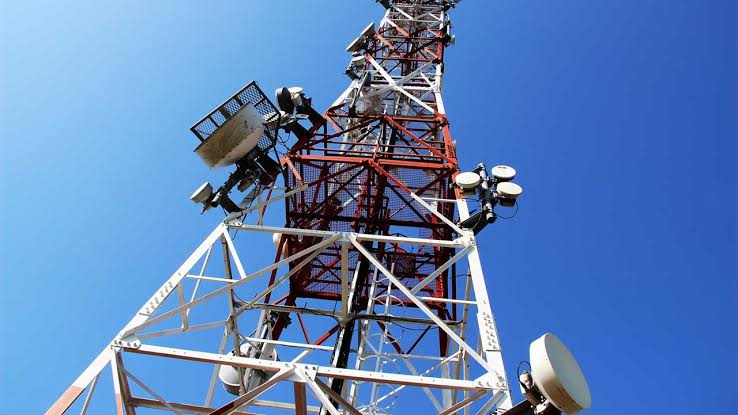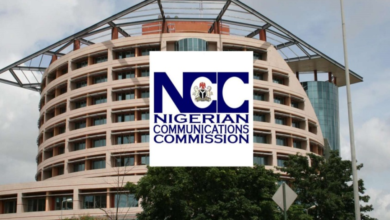The Nigerian Telecommunications Industry Report 2021

Culled from Access Bank Corporate Digest
Macroeconomic Update
Lending & Investment Rates: The Monetary Policy Rate (MPR) remained unchanged, closing at 11.50% in April 2021. The Prime Lending Rate (PLR) declined further to 11.13% from 11.21%.
Maximum Lending Rate (MLR) rose to 28.74% from 28.54% in March 2021. The 270-day Treasury Bills (T-Bills) maintained its upward trajectory as rate moved from 5.47% in March to 7.05% in April 2021. Yields on Government securities have begun to pick up from the low rates in 2020.
Bonny Light Oil: Oil prices sat at $65.12 per barrel in April 2021 relative to $63.4 per barrel in March 2021. Crude oil production in Nigeria reached 1.48 million barrels per day (mbpd) in March 2021, compared to 1.47mbpd in February 2021.
The Oil price increase may not improve the fiscal position and external reserves significantly because of Nigeria’s reduced OPEC quota of about 1.4 million barrels per day.
Foreign Exchange: External reserves slightly increased in April to $34.94 billion from $34.79 billion posted in March 2021. NAFEX closed at N410.24/$ in March 2021 reflecting a N2.61 depreciation relative to the figure recorded in the previous month.
Sustained weekly FX interventions by the apex bank across various market segments, meant to keep the local unit relatively stable have proven to be insufficient to keep the Naira from depreciating.
Industry Overview
For the past 5 (five) years, the Telecommunications sector has consistently been driving the digital economy agenda of the Government, as it provides the needed impetus in the digital space in supporting the economy, more especially during the COVID-19 pandemic and lockdown restrictions.
Last year, the Nigerian economy advanced in the fourth quarter (Q4) of 2020, supported by a boost from telecommunications & information services, with a contribution of 11.83% to the Gross Domestic Product (GDP).
In December 2020, the Federal Government placed a ban on the registration of new Subscriber Identification Module (SIM) cards, mandating the linking of customers old SIM cards to their National Identification Number (NIN).
However, the ban was lifted in April 2021. Telecommunications companies can now register new SIM cards but they must be linked to customers NIN.
Outlook for the Industry
The expected positive outlook for the Nigerian Telecoms market till 2025 is hinged on the aggressive 4G network deployment from the major network providers with the full adoption of 5G forecasted to kick off by 2023 with 0.56 million subscribers.
In 2020, the number of 3G subscriptions (85.37 million) outpaced the 2G subscriptions (70.98 million) and is forecast to maintain this trend throughout the forecast period. 4G subscriptions are also forecast to slowly increase throughout the forecast period.
Rising incomes, a steadily expanding population and demand from the enterprise sector will all support organic subscriber uptake. 4G uptake and organic subscriber growth will remain hallmarks of the mobile market over the next 10 years given the significant population growth in Nigeria over the medium term.
In the wireline market, the lack of adequate investment in the sector means that mobile substitution will continue to cannibalize fixed voice subscriptions, but the uptake of Voice –overInternet Protocol (VoIP) as well as broadband services offer some prospects for growth.
Broadband subscriptions which reached an estimated value of 11.4 million is forecast to reach 14.04 million subscriptions in 2025 as fixed subscriptions gradually phase out expected to reach 74,800 subscriptions in 2025. Frequent fluctuations in the wireless segment will also pose significant downside risks to this projection, but as real GDP growth continues to improve in the market, such fluctuations is expected to be less severe compared to those experienced in 2016 and 2017.
Outlook for the Industry: Post COVID-19
Recovering Economy: The GDP growth improved in Q4 2020 reflecting the gradual return of economic activities following the easing of restricted movements and limited local and international commercial activities. The pick-up in economic activities would be instrumental in boosting the growth of the telecoms industry in coming quarters.
AFCFTA: The African Continental Free Trade Area (AfCFTA) would promote market expansion for businesses, job creation for the populace amongst others. The improvement of telecoms infrastructure will help the country benefit from the gains of the trade pact. This will add more revenues to the pockets of Telecoms industry players.
Forex Supply: The forex supply of US Dollar in particular continues to outweigh its demand. This imbalance makes depreciation inevitable as more Naira is needed to exchange a dollar. The CBN’s diaspora remittances policy amongst other forex driven policies are expected to ease out this imbalance.
Government Support: In the broadband segment, to ensure licenses can concentrate capital on deploying networks as quickly as possible, the Government promised to grant between 5 and 7 years of tax holidays amongst other initiatives to Telco providers, if they extend networks to less commercially attractive zones.
Business Advisory for Telecom Businesses and its Value Chain
Cost reduction cannot be over emphasized. It is imperative that players in the industry continue to swap fixed costs for variable costs where necessary, to sustain and keep the business in the competitive. Ensure that the business abides by all regulatory standards that govern the sector to avoid sanctions
Remain innovative and diversify into new and sustainable business segments to create new streams of revenue.
Related businesses can also engage in strategic alliances or partnerships. This would promote access to new markets, product expansion and diversification. Potential gains from the African Continental Free Trade Agreement (AFCFTA) could be leveraged.
Continuously provide top notch services and employ customer centric pricing strategy to retain and possibly increase market share.
Growing Internet, Trends and Projections Africa is without a doubt the largest undervalued investment destination with potential for profound impact and development. The Africa internet economy has the potential of adding up $180bn to Africa’s Gross Domestic Product (GDP) by 2025.
Gross domestic product (GDP) grew by 4% per year between 2010 and 2019, more than twice that of the EU (1.7%) and Latin America (1.7%) over the same period. The Internet economy’s potential to play a pivotal part in Africa’s GDP growth has led to burgeoning investors interest. As venture capital funding reached an all time high in 2019 before Covid struck. Covid has however shown the innovative potential of digital start-ups in Africa when required as public sector partnerships with private healthcare start-ups are increasing the availability of testing and have expanded the capacity for medical recordkeeping.
Africa has the world’s youngest, fast growing, and increasingly urbanized workforce. This cultivates the young digital entrepreneurs as the driving force for the continent’s economy. Despite a negative macroeconomic outlook as a result of COVID-19, the African Internet economy is expected to be resilient.
By 2025, the Internet economy has the potential to contribute nearly $180 billion to Africa’s economy, depending on the usage level of digital technologies by businesses and the right mix of policy actions. Internet access is transforming the African continent. Since 2000, the number of people with Internet access has grown to over 520 million (or 40% of the population); and 60% of the population accesses the Internet via mobile. Increasing Internet access to reach 75% of the population could create 44 million jobs.
A variety of sectors – including fintech, e-Commerce, healthtech, media and entertainment, local transportation, food delivery, and business-to-business (B2B) e-Logistics – are leading the way in Africa’s digital transformation. Although formal sector businesses (such as large corporations) have historically shaped the economy, the Internet economy offers leapfrog opportunities to address challenges faced by Africa’s fast growing number of informal businesses and workers.
Africa brimming with Tech Talent
Africa’s developer population is young and growing, and the growth of the technology ecosystem, talent pool, and innovation hubs goes hand in hand with the rise of local developer talent.
Tech talent in Africa is at a historical peak and continues to rise. There are nearly 700,000 professional developers across Africa with more than 50% concentrated in five key African markets: Egypt, Kenya, Morocco, Nigeria, and South Africa.
African developers use both formal and informal education channels to gain skills and access to wellpaying jobs. The top two (2) developer training pathways are through university programs and self-taught channels. Yet a skills gap exists, and curricula in engineering programs are often dated and lack opportunities for students to apply skills learned in the classroom.
Coding classes are driving growth in software development training. Training programs from companies such as Decagon, Gebeya, Google, Moringa School, Semicolon, and Umuzi blend traditional learning with online, flexible learning and bootcamp-style experiences.
These STEM-related programs, outside of formal education institutions, fill knowledge and skills gaps and equip participants with the expertise they need for increasingly advanced jobs in technology.
Women currently comprise one-in-five of the total population of developers in Africa. While this number is still low, the growth of the ecosystem has begun creating many opportunities for women coders, especially in Egypt, Morocco, and South Africa.
Developer communities across Africa are helping new developers learn new skills and upskill existing ones, offering shared connections, giving mentors a chance to share their knowledge, sparking curiosity, and encouraging entrepreneurship and creativity.
Sectoral Impact
Fintechs: Fintech start-ups continue to be the most funded startups in Africa, with significant Year-on-Year (YoY) growth and are enabling African countries to leapfrog from physical retail banking to online payments, remittances, micro loans, and insurance.
Sub-Saharan Africa has 5 commercial bank branches per 100,000 adults, compared with 13 per 100,000 adults globally. Paired with rising mobile connectivity, individuals living in rural areas with poor physical banking infrastructure and limited access to fixedline Internet access are increasingly able to use mobile devices for financial transactions.
Nigerian companies dominated fintech investments in 2019, with Interswitch receiving $200 million in equity funding from Visa, in anticipation of a projected 35% growth of the electronic payments market between 2018 and 2023. Interswitch helped transform the infrastructure for the banking system in Nigeria, and it additionally services over 23 other countries.
Opay (a payment platform and “Superapp” by Opera) and PalmPay followed with $120million and $40million in investments, respectively. In July 2020, DPO Group, a Nairobi based payments processing service, was acquired by Network International for $288 million, and in August ,World Remit announced a deal to acquire Sendwave, an African focused digital remittance start-up for more than $500 million.
Development Opportunities in the Informal Sector: Businesses in Africa are broadly organized in formal and informal sectors. Businesses in the formal sector are typically large corporations like banks and insurance companies, telecommunication operators, agribusinesses, and oil and mining companies. In general, African businesses are smaller than other businesses in developing regions, by more than 20% on average. 109 Businesses in the informal sector are typically small, often run by fewer than 5 employees. Informal businesses represent 92% of firms in Nigeria.
In Sub-Saharan Africa, the share of economic output from the informal sector ranges from 26% in South Africa, 33% in Kenya, 46% in the Democratic Republic of the Congo, to 57% in Nigeria. To date, most successful ventures in the African Internet economy address challenges faced by businesses or workers in the informal sector. There are 1.2 million informal retailers in Sub-Saharan Africa already engaged in the distribution of mobile service.
HealthTech: In the past few years, healthtech has alternated between being the second and the fifth most funded vertical in Africa. The African healthcare market was valued at over $85 billion in 2017 and is expected to reach over $100 billion by 2030 at a CAGR of 7.9%.
Patients and doctors around the world have begun using telemedicine more frequently, as the COVID-19 pandemic makes in-person visits ill-advised or impossible due to distancing or lockdown.
Legislation will continue to expand the use of telemedicine after the COVID-19 pandemic, resulting in long-term growth of telemedicine in Africa.
Media & Entertainment: The Media and Entertainment (M&E) industry has grown steadily over the past few years and is expected to continue growing for the next four years.
The five largest M&E markets across the continent—South Africa, Nigeria, Kenya, Ghana, and Tanzania, showed a CAGR of 11.9% with total revenue of over $17 billion in 2018. Nigeria’s M&E market is significantly influenced by Internet consumption, which will continue to contribute growth. With market revenue reaching $4.5 billion in 2018, earnings are expected to keep rising at a 19.3% CAGR and are estimated to reach more than $10 billion by 2023.
With the predicted rise in disposable income for millions of people across the continent over the next four years, more consumers will be able to enjoy M&E products and services, leading to growth in this market sector.
E- commerce: Africa’s e-Commerce industry has shown incredible growth in the past decade, resulting from an improved payment-processing landscape, a rise in mobile technology, and mobile money tech adoption.
In prior years, the industry faced some skepticism as consumers raised logistical concerns. More recently, however, the industry has seen substantial growth with its first round of venture capital (VC) funding and the entrance of multiple startups.
The partial and full lockdowns mandated in countries on the African continent and globally have necessitated e-Commerce behaviors that may extend beyond the pandemic period.
However, e-Commerce markets may experience an increasing volume of shoppers exploring other retail offerings as behaviors change post- pandemic. Already 37% of South Africans have reported shopping online more than usual during this public health crisis.
B2B e-logistics: B2B platforms are solving logistical challenges for informal retailers. They also consolidate a highly fragmented supply chain and allow retailers to pay as they go, providing higher profit margins for micro- and small retailers.
There is a shortfall in African infrastructure investment of between $67 billion and $107 billion annually, hampering development in the logistics sector as it imposes a 40-60% surcharge on the cost of goods.
Start-ups are taking advantage of connectivity to build a more efficient supply chain and delivering significant efficiency gains, especially in economies dominated by the informal sector. Trendlines project that long-term growth will rapidly accelerate as e-Logistics companies scale and pivot to support rapid e-Commerce growth. E-Logistics companies will expand geographically as they look to connect rural areas with regional supply chains.
African Tech Venture Funding
Tech Capitalism ignites Africa Tech Boom: Investment in African tech startups continues to grow year over year. According to Partech Ventures Africa, African tech startups reached a new milestone in 2019 with $2.02 billion raised in equity funding, representing 74% YoY growth with 250 equity rounds and an average deal size of $8.08 million.
These deals took place across 18 countries, with Nigeria, Kenya, Egypt, and South Africa as the major investment destinations. Notably, Partech’s report shows massive densification at the early stages (Seed and Series A), which accounted for 206 of the 250 transactions in 2019 and was over $600 million, signaling increasing investor confidence.
Africa’s venture capital landscape is expanding at an unprecedented rate, as are the number of Africa-based and Africa-focused venture capital firms and funds, with venture capital investment in Africa reaching an alltime high in 2019.
Historically, African startups have faced challenges in securing funding. Key issues include insufficient seed funding, limited follow on funding, and a lack of angel investors. In a 2019 Google survey, 82% of African startups reported difficulties in accessing funding.
Access to a large single market is key: Nigeria is currently the largest single market in Africa and remains the continent’s leading investment destination. However, when the AfCFTA rolls out across the continent, markets should become easier to access.
The full impact of COVID-19 remains unknown, and as investors become more risk-averse amid economic uncertainty, the landscape will likely shift away from early- and seed-stage investments and toward more established companies with clearer paths to profitability.
Angel Investment void, stalling Africa Tech
Access to early stage and pre-seed funding is still lacking across most of the continent, especially for ticket sizes ranging from $50,000 to $500,000.
Historically, African startups have faced many challenges in securing funding. Key issues include insufficient seed funding, limited follow-on funding, and a lack of angel investors. Angel investment from high-net-worth individuals is virtually non-existent in some parts of the continent
Possible solutions to these hurdles are the new funds being created to address financing needs, especially foreign and local funds that focus specifically on the African startup ecosystem. The need to scale across Africa seamlessly is an important, but currently complicated task.





